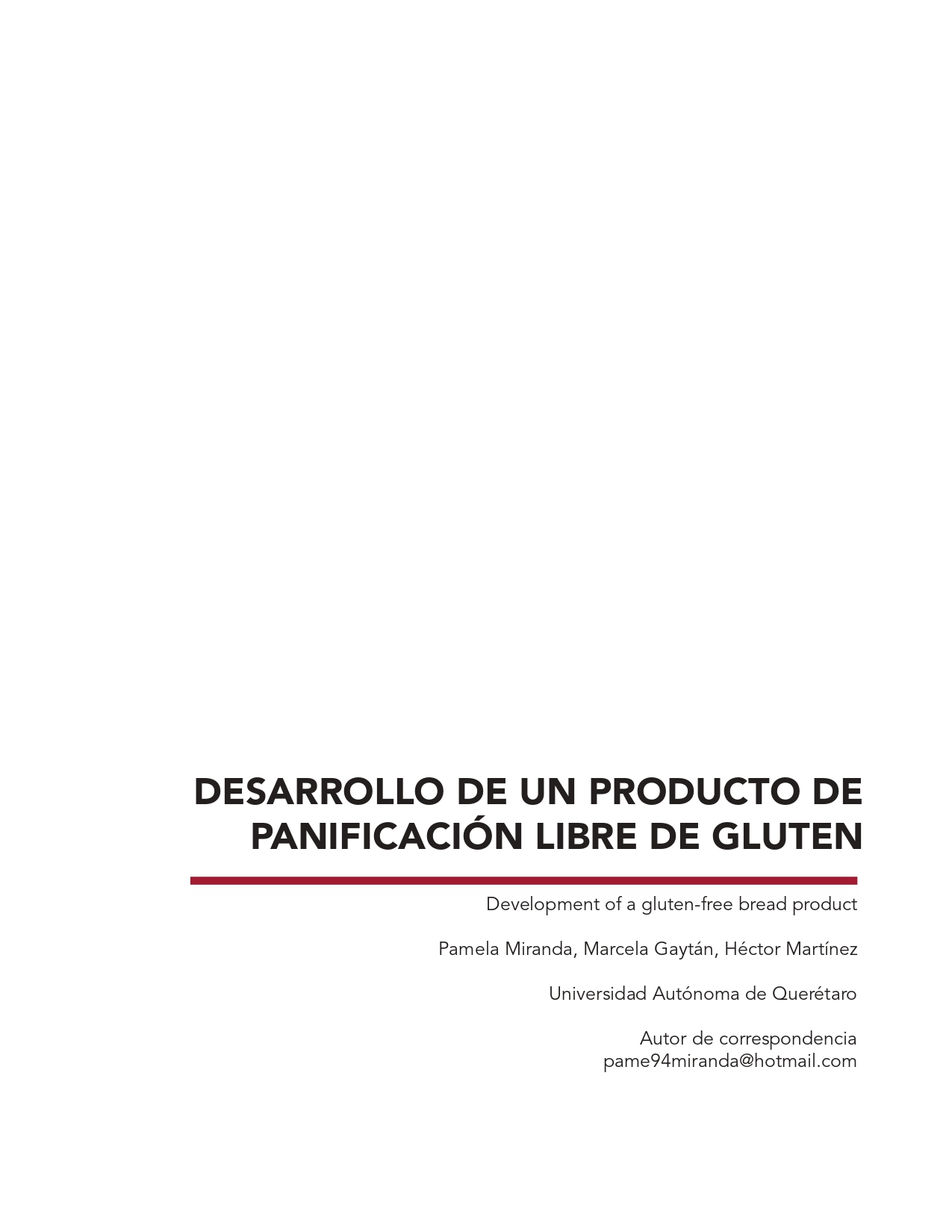Abstract
Celiac disease is a genetic autoimmune enteropathy, produced by the body's response to gluten, affecting at least 1% of the world's population. The objective of the work was to develop a gluten-free bread product using alternative flours providing a new option for the celiac community. The optimization of the formula for bread making was carried out through the use of a mixing design, the use of soy protein isolate is proposed in order to improve the texture and other characteristics of the product. The hardness was evaluated, using a TA PLUS textureanalyser, as a deter mining factor for the selection of the best formula, because this attribute is decisive for consumer preference in gluten-free breads, as well as its sensorial acceptance. The selected formula is conformed with 64.59% of sweet potato flour, 18.84% of sor ghum flour and 16.57% of soy protein isolate enriched with milk, egg, sucralose, salt and baking powder; obtaining a bread with pleasant flavor, as well as a low hardness (<13 N) similar to wheat flour bread. The sensory test was per formed with a hedonic scale of nine points, the selected formula was located in the taste levels. The addition of soybean isolate and sweetpotato flour allows the moisture retention of the food, providing a smoother texture and a hi- gher nutritional content. The product could be an alternative for the celiac population and the general public.
This work is licensed under a Creative Commons Attribution-NonCommercial 4.0 International License.

